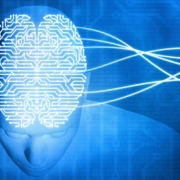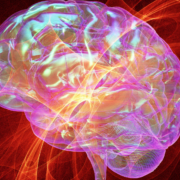Neurofeedback: myth or promise?
If you’ve been diagnosed with Attention-Deficity/Hyperactivity Disorder (ADHD) or you’re battling substance abuse, your provider may say you could benefit from something called neurofeedback.
This isn’t treatment. Instead, this non-invasive experience is closer to training—a therapeutic intervention that aims to teach patients how to regulate and improve brain function.
Neurofeedback hinges on neuroplasticity, or the ability of our brains to adapt and evolve.
In theory, the goal of neurofeedback is to help certain patients achieve greater self-control, leveraging skills to alleviate symptoms of various neurological disorders and mental health conditions. In practice, however, while some patients say the intervention helps them tremendously, others say it has no impact whatsoever.
Data on neurofeedback is mixed. Early research seemed to indicate it showed promise. Several more recent peer-reviewed articles have shown that the procedure is often not more effective than a placebo. Other research indicates neurofeedback is promising but not conclusively positive. What’s more, critics say neurofeedback is expensive, time-consuming, and less-effective than proven treatments.
“It’s definitely a lightning-rod issue,” said Dr. Saul Rosenthal, a licensed psychologist in Newton, Massachusetts. “To some it seems so unbelievably superficial that you can teach your brain, or your brain can teach itself, to change in ways that are so profound.”
How it works
No discussion about neurofeedback can begin without first explaining how it works.
At the highest level, neurofeedback is a form of biofeedback, which is the process of obtaining information and metrics about physiological functions to understand and change existing bodily processes. While biofeedback pertains to any function in the body, as the name suggests, neurofeedback focuses on the brain.
On more of a micro scale, neurofeedback provides immediate feedback from a computer-based program that assesses a client’s brainwave activity.
Programs vary, but most of them often look like video games. These programs use auditory or visual signals to help patients recognize certain thought patterns and try to modify them. During this process, electrodes are placed on a patient’s head so the program can access, read, and record the patient’s brainwaves.
These brainwaves are compared to a set of baseline brainwaves collected through an electroencephalogram (EEG) at the beginning of the neurofeedback intervention.
Here’s an example. During a typical neurofeedback session, a screen might change color due to specific changes in brainwaves which are thought to be related to emotion, becoming darker for negative emotions and lighter for positive ones. The participant can then learn to recognize what their brain needs to do to promote healthier thoughts and responses, to train their brain to focus more on the desired outcomes.
When he explains neurofeedback to patients, Dr. Rosenthal said he likens it to training a dog.
“When you’re trying to train a dog, you need to show it what you want,” he said. “If you want a dog to come to you, you wait until it does that and then you give it a treat. You’re shaping behavior. It’s the same thing with your brain. If you want something to change, you reward your brain for changing with points or whatever. It’s self-shaping. It’s really similar.”
(This article, from 2021, offers a great review of the effects of neurofeedback on a healthy brain.)
Pros and cons
Dr. Rosenthal reiterated that neurofeedback is training, not treatment. He referred to it as an “operant conditioning model,” and said it’s important to note that the intervention cannot “cure” anything. At the same time, neurofeedback has been used to help patients address several different mental health conditions.
One of the biggest areas of research tracks the impact of neurofeedback on ADHD and data so far has been mixed—one study showed no major impact while another suggested trending in a positive direction.
Neurofeedback also has been used to address substance use disorders, and anxiety and trauma.
It has been used to help certain patients improve focus, concentration, energy, and sleep quality, and reduce moodiness, anxiety, and headaches. Neurofeedback even has been used by the military, athletes, musicians, dancers, and actors to improve performance.
Few experts understand this as well as Dr. Ron Swatzyna, director and chief scientist of neurophysiology research at the Houston NeuroScience Brain Center. Dr. Swatzyna has been practicing neurofeedback for years and currently is called upon by other experts to interpret EEGs and associated data. His assessment: Neurofeedback can work wonders.
“Neurofeedback works well whenever you have focal issues in the brain,” he said. “A lot of times we have seizure patients who won’t respond to treatment but will respond to neurofeedback. I’ve seen children who are nonverbal—kids with autism—and within six weeks doing neurofeedback they get it down and take off with language. In some cases it can make a huge difference in the lives of these patients. From where I sit, that’s not insignificant.”
But neurofeedback isn’t all rainbows and unicorns.
For starters, recent research (such as this article and this article) suggests that more data is necessary to determine the true efficacy of this approach.
Furthermore, although the therapeutic intervention is thought to be generally safe, it can have some potential adverse effects. Specifically, it might worsen symptoms being treated, cause headaches, or fatigue. In some patients with seizure disorders, it can even worsen their seizures.
Dr. Rosenthal addresses some of these results by noting that neurofeedback must be personalized for every patient—if it’s not, it may not work the way it is intended.
“It’s hard to come up with statements that it can treat everyone in specific ways because that may not be the case” he said, adding that most neurofeedback interventions take time, and patients may not be, well, patient. “I believe [neurofeedback] is an efficacious, subtle and profound intervention. I also acknowledge that may not be the case for everyone.”
What’s next
Research around the specific neuropsychological mechanisms by which neurofeedback is thought to work is ongoing. What researchers do know: Certain brain wave patterns are associated with specific cognitive operations, and encouraging those brain waves may lead to an increase in desired cognitive operations. Dr. Swatzyna explained that beta waves are associated with the cognitive operation of focus; while theta waves are associated with anxiety. (This article and this article are good primers on research into managing these beta waves.) Research into these areas will surely continue.
In the meantime, many experts said neurofeedback remains a worthwhile option for dealing with neurodevelopmental issues in an alternative way.
“It’s always important to give patients options for managing health and performance concerns—especially options in addition to medication,” said Dr. Frederic Shaffer, professor of psychology at Truman State University in Kirksville, Missouri, and one of five editors on a recent efficacy review titled Evidence-Based Practice in Biofeedback and Neurofeedback.
At the same time, Dr. Shaffer noted that neurofeedback may not be for everyone.
First, he said, “some clients will prefer taking pills instead of learning skills.” Another issue: out-of-pocket expense. It is not likely that many insurance plans will cover neurofeedback, which means patients interested in this particular therapeutic intervention could be facing self-pay for anywhere from 12 to up to 40 sessions.
“Depending on the issue, it can be quite expensive in the short run compared with medication and hospitalization,” Dr. Shaffer said. “At the same time, in the long run, again depending on the condition, it may turn out to be very cost effective.”
For Dr. Swatzyna, considering neurofeedback as part of an intervention is a step in the right direction, but doctors also must consider other options.
“We need more science in psychology,” he said. “Neuroscience must be the underpinning of neurofeedback, which means patients must make sure a neurologist is going to look at a brain scan or EEG before training attempts of any kind. This [intervention] is a great tool to help uncover what’s causing someone’s symptoms. As doctors, we all should be trying to use whatever we can to achieve that goal.”
This article has been factchecked. For more about that process, click here.









